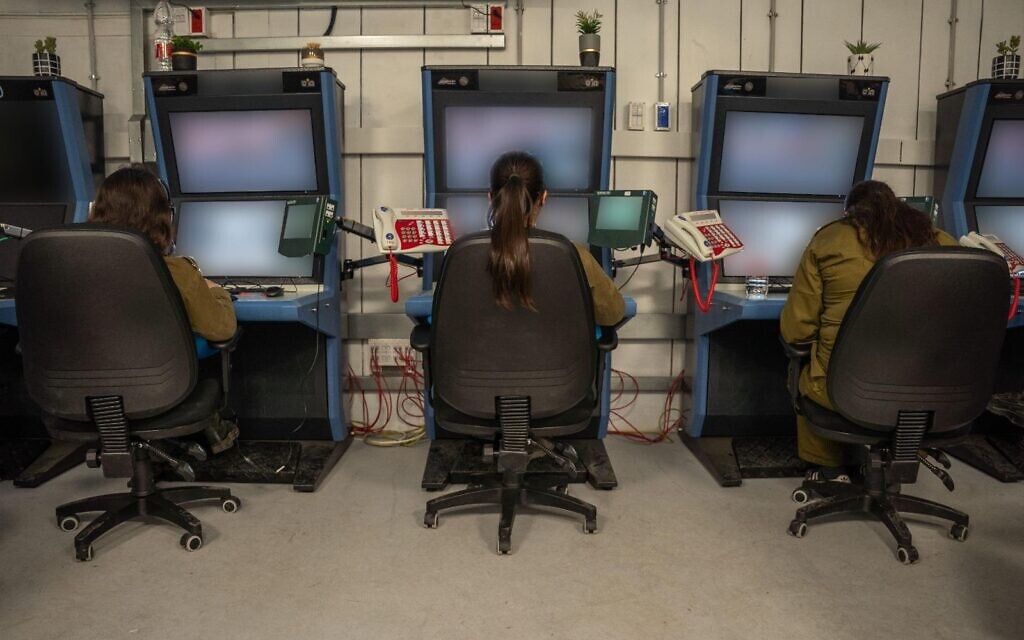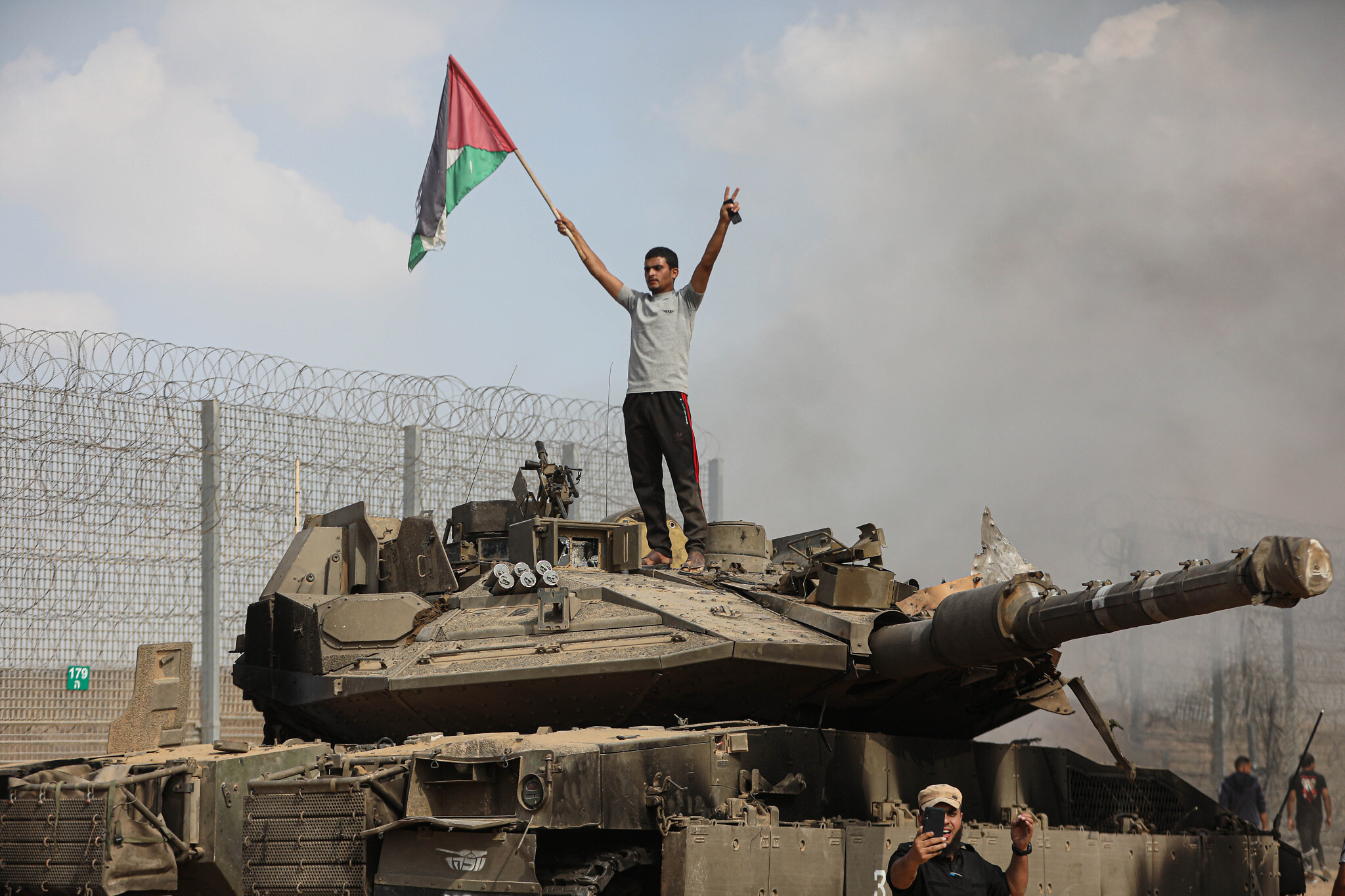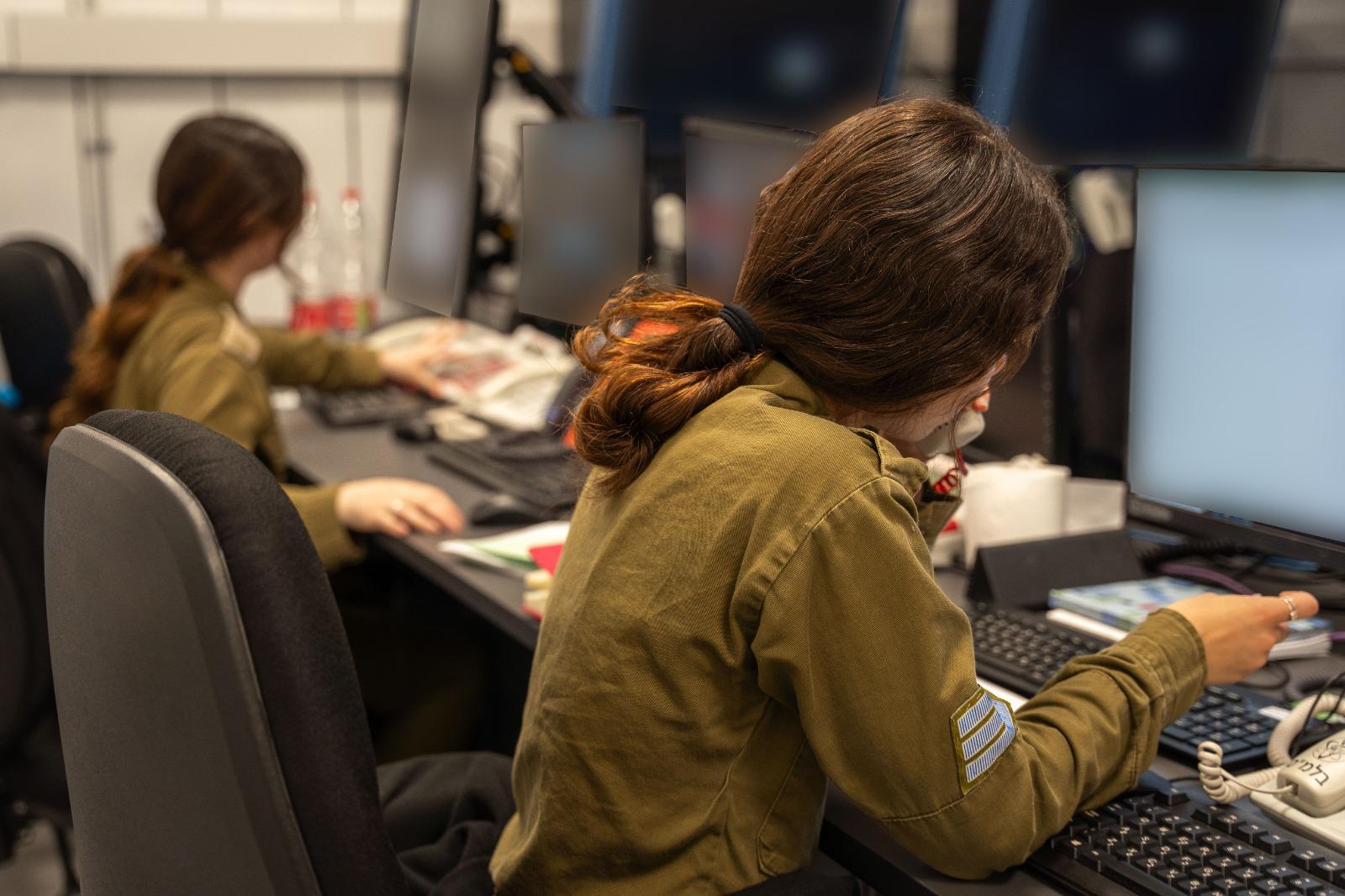



Senior commanders refused to heed the warnings of the young female surveillance soldiers tasked with watching the Gaza border in the weeks before the brutal Hamas massacre on October 7, and the soldiers believe sexism was a factor in their being ignored, according to a Friday report.
Rather than hide its plans for the attack, the Hamas terror group was training in plain sight. Soldiers in the Border Defense Corps who raised the alarm told the Haaretz daily (Hebrew) they believe sexism played a part in the fact that they were not heeded.
“It’s a unit made up entirely of young girls and young female commanders,” an unnamed soldier said.
“There is no doubt that if there were men sitting at those screens, things would look different.”
Israel Defense Forces female surveillance soldiers, referred to in Hebrew as tatzpitaniyot, belong to the Border Defense Corps and operate along the country’s borders, as well as throughout the West Bank.
The surveillance soldiers are referred to by many as “the eyes of the army” as they provide real-time intelligence information to soldiers in the field, 24 hours a day, seven days a week.
Related: Surveillance soldiers warned of Hamas activity on Gaza border for months before Oct. 7
For weeks before Hamas’s October 7 onslaught — when thousands of terrorists streamed over the border, killed some 1,200 people, the majority of them civilians, and kidnapping some 240 more — surveillance soldiers reported signs of activity along the tumultuous Gaza border, situated a kilometer from them.
One of the soldiers, identified only as Ilana, told Haaretz that troops observed Hamas terrorists training to take over an observation post amid unusually high drone activity.
“In the last two months, they started sending up drones every day, sometimes several times a day, right near the border, some 300 meters from the fence, and sometimes less than that,” she said.
“A month and a half before the war, we saw that in one of the Hamas training camps they had built an exact, scaled model of an observer’s position, like the one we operate. They started training there with drones to hit the [machine gun] shooter,” Ilana said.
She said the soldiers sent a warning up the chain of command that Hamas was training for an attack, but they were ignored.
“We even shouted at headquarters that they needed to take us more seriously. That something bad was happening here. We realized that there was strange behavior in the sector and that they were simply training for an attack against us.”
Ilana said that when the attack started and terrorists used drones to hit their positions, “this was exactly what had happened in the last month and a half during their training.”
Another unnamed soldier said she had observed Gazans building an exact replica of a Merkava Mark 4 tank.
“They practiced how to hit a tank with an anti-tank missile, where exactly to hit, and then they practiced in front of our eyes how to kidnap the tank’s crew,” she told Haaretz.
The report even quoted one of the surveillance soldiers apologizing for waking a commander in the early hours of October 7 to report that she was seeing “something strange.”
A soldier identified as Talya said that they were told not to try and process the information they gathered.
“They said we should watch the cameras, and that’s it. They would say that we were the eyes, not the head that should make decisions about the information,” Talya said.
The report noted that, in fact, some parts of the security establishment were concerned enough about the situation on the border that they had held discussions on October 6 after indications pointed to a likely coming attack in which a limited force of terrorists would attempt to infiltrate into Israel.
According to reports, officials made a decision to increase the presence of special forces in the south, and other commando units were put on alert.
However, Friday’s report said that nobody alerted the surveillance soldiers to the warnings, including for a potential infiltration into the border communities.
“If we had known about this warning, this whole disaster would have looked different,” said a soldier identified as Yaara. “No one told us that there was such a high level of vigilance.”
“The IDF left us like sitting ducks,” said Yaara. “The fighters at least had weapons and were killed like heroes. The female surveillance soldiers were abandoned by the army and simply slaughtered without having any chance to defend themselves.”
The report was not the first account of surveillance soldiers stationed on a base in Kibbutz Nahal Oz saying that their warnings were never taken seriously. The Kan public broadcaster and Channel 12 news both aired interviews with soldiers and former soldiers who similarly said they were ignored.
Haaretz additionally published an investigation last year in which female surveillance soldiers described being treated with contempt and said that their opinions were not respected.
The surveillance soldiers gather information through a variety of cameras, sensors and maps, and are expected to be acutely aware of every small change that happens in the 15-30 kilometers of land that they are each responsible for monitoring.
Once relevant information has been gathered by the surveillance soldiers, it is passed up the chain of command, including to intelligence officials who then determine what steps need to be taken.
The soldiers spend some two to three months learning about the single sector under their observation “better than anyone else in the IDF.”
“In my sector I know every stone, vehicle, shepherd, Hamas training base, operative and outpost,” Talya said, adding that a seasoned surveillance solider does not need “8200 [a signals intelligence unit] to say if an individual is acting abnormally.”
In addition to the warnings being ignored, three of the IDF’s observation balloons on the Gaza border were out of service at the time of the October 7 onslaught.
The IDF had assessed that the balloons crashed due to technical issues, though according to the report, it was also investigating whether Hamas was behind the incidents.
The balloons, which have advanced cameras and sensors, give the military much higher observation capabilities than the surveillance equipment along the border fence.
The report said that the IDF did not replace the out-of-service balloons with other observation means as they awaited repairs.
It also said that many of the soldiers who survived the massacre have been told they will face sanctions for desertion if they don’t return to their posts. Many of the soldiers are dealing with severe trauma, having survived an assault in which friends and colleagues were massacred when Hamas terrorists overran the bases.
“We tried to explain that we can’t go back,” said a soldier identified as May. “We lost our friends. For hours we hid with corpses.”
“The commanders have not visited us. No one from the army has come to talk to us and ask how we feel. Our existence is simply ignored,” she said.
Another soldier named Shir said she eventually reported back to duty for the sake of her friends who had been killed and kidnapped to Gaza: “No one cares how I am or if I am able to do it. The main thing is that I return to shifts of nine hours a day watching screens.”
In response, the military said it had been providing support to the soldiers.
Fifteen female soldiers were killed at the Nahal Oz base on October 7, with a further six abducted and held hostage in Gaza. One soldier, Pvt. Ori Megidish, was rescued by IDF troops during an operation in Gaza.
The overwhelming sense from the surveillance soldiers was that there was a chance the massacre could have been averted.
“They left our friends to die because no one wanted to hear us,” one of the soldiers said.
Shira Silkoff and Emanuel Fabian contributed to this report.




